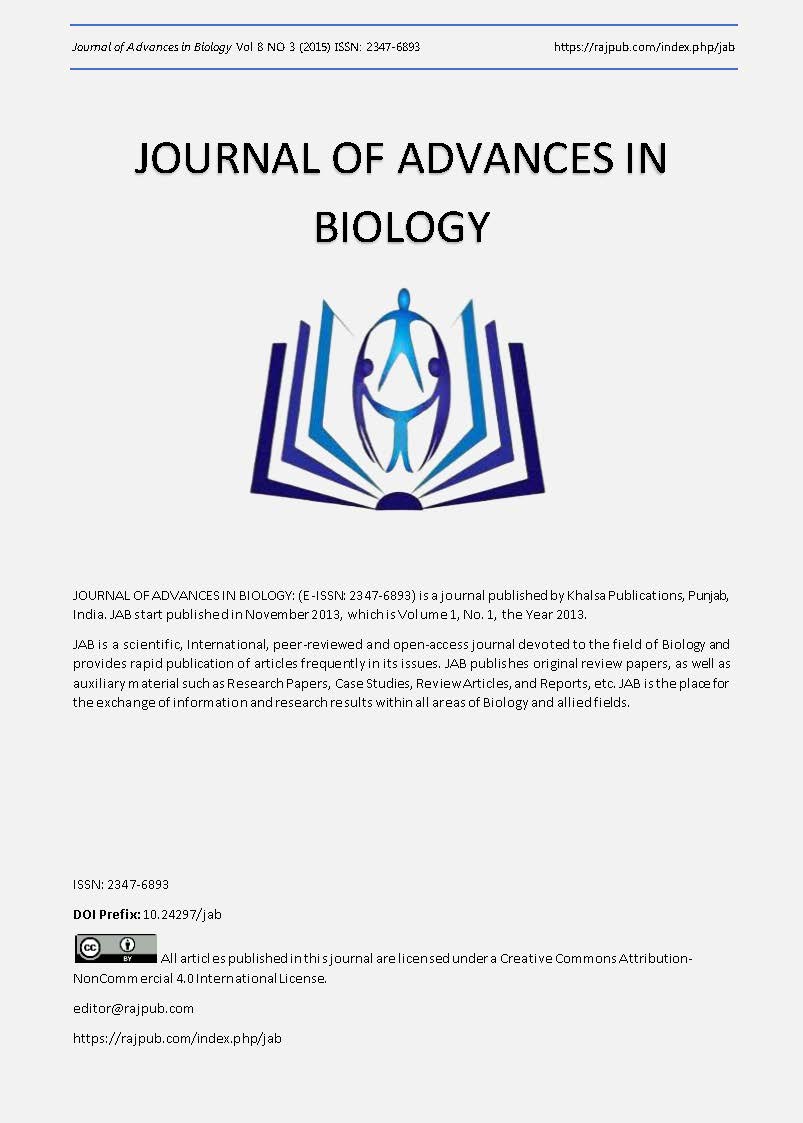Relationship between reproductive risk factors, tumor characteristics and survival in breast cancer molecular groups
DOI:
https://doi.org/10.24297/jab.v8i3.6528Keywords:
breast cancer, risk factors, survivalAbstract
Introduction. Breast cancer may be classified into distinct molecular subtypes based on gene expression profiling or immunohistochemical methods. These molecular subtypes are prognostically significant, but their etiologic profiles have not been well established. Our study investigates the relationships between menstrual factors: age of menarche/menopause, irregular/regular menstruation, parity and use of oral contraceptives, tumor characteristics, survival related by the molecular subtypes. Methods. This study was performed on a group of 173 of patients diagnosticated with breast cancer at The Municipal Clinical Hospital of Timisoara, data being obtained from the medical records of the patients and through a questionnaire sent by post. Molecular classification was made by immunohistochemistry using a panel of four markers: estrogen receptor, progesterone receptor, human epidermal growth factor receptor 2 and CK 5/6. All reproductive factors were analyzed in relation to molecular classes and survival. Results. Younger age at menarche was significantly associated with HER2 and triple-negative subtypes and survival rates were the poorest in women from these groups. The patients with luminal subtype tumors were mostly multiparous whereas the patients with HER2 and triple-negative tumors presented low parity. Conclusions. From the studied hormonal and menstrual risk factors menopausal status, age at menarche and menopause, oral contraceptives use, parity and family history of breast cancer showed significant trends among tumor subtype and they have a significant impact on molecular breast cancer groups regarding prognosis and survival.
Downloads
References
[2] Altekruse SF, Kosary CL, Krapcho M, et al., eds. SEER Cancer Statistics Review, 1975-2007. Bethesda, MD: National Cancer Institute; 2010
[3] Dunnwald LK, Rossing MA, Li CI. Hormone receptor status, tumor characteristics, and prognosis: a prospective cohort of breast cancer patients. Breast Cancer Res. 2007
[4] Onitilo AA, Engel JM, Greenlee RT, Mukesh BN. Breast cancer subtypes based on ER/PR and Her2 expression: comparison of clinico-pathologic features and survival. Clin Med Res. Jun 2009;7(1-2):4-13.
[5] Foulkes WD, Smith IE, Reis-Filho JS. Triple-negative breast cancer. N Engl J Med. Nov 11 2010;363(20):1938-1948.
[6] Carey LA, Perou CM, Livasy CA, et al. Race, breast cancer sub¬types, and survival in the Carolina Breast Cancer Study. JAMA. Jun 7 2006;295(21):2492-2502.
[7] Perou CM, Sorlie T, Eisen MB, et al. Molecular portraits of human breast tumors. Nature 2000; 406:747 – 52.
[8] Sorlie T, Tibshirani R, Parker J, et al. Repeated observation of breast tumor subtypes in independent gene expression data sets. Proc Natl Acad Sci U S A 2003; 100:8418 – 23.
[9] Nielsen TO, Hsu FD, Jensen K, et al. Immunohistochemical and clinical characterization of the basal-like subtype of invasive breast carcinoma. Clin Cancer Res 2004; 10:5367 – 74.
[10] Schwartz GF, Hughes KS, Lynch HT, et al. Proceedings of the inter-national consensus conference on breast cancer risk, genetics, & risk management. Cancer. Nov 15 2008; 113(10):2627-2637.
[11] Antoniou A, Pharoah PD, Narod S, et al. Average risks of breast and ovarian cancer associated with BRCA1 or BRCA2 mutations detected in case Series unselected for family history: a combined analysis of 22 studies. Am J Hum Genet. May 2003; 72(5): 1117-1130.
[12] Erica T. Warner, Graham A. Colditz, Julie R. Palmer, Ann H Partridge, Bernard A. Rosner, Rulla M. Tamimi, Reproductive Factors and Risk of Premenopausal Breast Cancer by Age at Diagnosis: Are There Differences Before and After Age 40? Breast Cancer Res Treat. 2013 November; 142(1)
[13] Hussein A. Assi, Katia E. Khoury, Haifa Dbouk, Lana E. Khalil, Tarek H. Mouhieddine, Nagi S. El Saghir , Epidemiology and prognosis of breast cancer in young women , J Thorac Dis 2013;5(S1):S2-S8.
[14] Amanda I. Phipps, Rowan T. Chlebowski, Ross Prentice, et al, Reproductive History and Oral Contraceptive Use in Relation to Risk of Triple-Negative Breast Cancer, J Natl Cancer Inst 2011;103:470–477
[15] G Ursin, L Bernstein, SJ Lord, et al, Reproductive factors and subtypes of breast cancer defined by hormone receptor and histology, British Journal of Cancer (2005) 93, 364 – 371
[16] M E Work, E M John, I L Andrulis , J A Knight , Y Liao , A M Mulligan , M C Southey , G G Giles, G S Dite , C Apicella , H Hibshoosh , J L Hopper and M B Terry Reproductive risk factors and oestrogen/ progesterone receptor-negative breast cancer in the Breast Cancer Family Registry, British Journal of Cancer (2014) 110, 1367–1377
[17] Xing P, Li J, Jin F. A case-control study of reproductive factors associated with subtypes of breast cancer in Northeast China, Med Oncol. 2010 Sep; 27(3):926-31.
[18] Xiaohong R. Yang, Mark E. Sherman, David L. Rimm, et al. Differences in Risk Factors for Breast Cancer Molecular Subtypes in a Population-Based Study, Cancer Epidemiol Biomarkers Prev 2007;16:439-443.
[19] Foulkes WD, Stefansson IM, Chappuis PO, et al. Germline BRCA1 mutations and a basal epithelial phenotype in breast cancer. J Natl Cancer Inst 2003; 95: 1482 – 5. [20] Jessica M. Dolle, Janet R. Daling, Emily White, et al, Risk Factors for Triple-Negative Breast Cancer in Women Under Age 45, Cancer Epidemiol Biomarkers Prev. 2009 April; 18(4): 1157–1166.
[21] Dolle JM, Daling JR,White E et al. Risk factors for triple-negative breast cancer in women under age of 45 years. Cancer Epidemiol Biomarkers Prev 2009; 18(4): 1157-1166
[22] Kotsopoulos J, Lubinski J, Lynch HT, et al. Age at menarche and the risk of breast cancer in BRCA1 and BRCA2 mutation carriers. Cancer Causes Control 2005; 16: 667 – 74.
Downloads
Published
How to Cite
Issue
Section
License
 All articles published in Journal of Advances in Linguistics are licensed under a Creative Commons Attribution 4.0 International License.
All articles published in Journal of Advances in Linguistics are licensed under a Creative Commons Attribution 4.0 International License.




